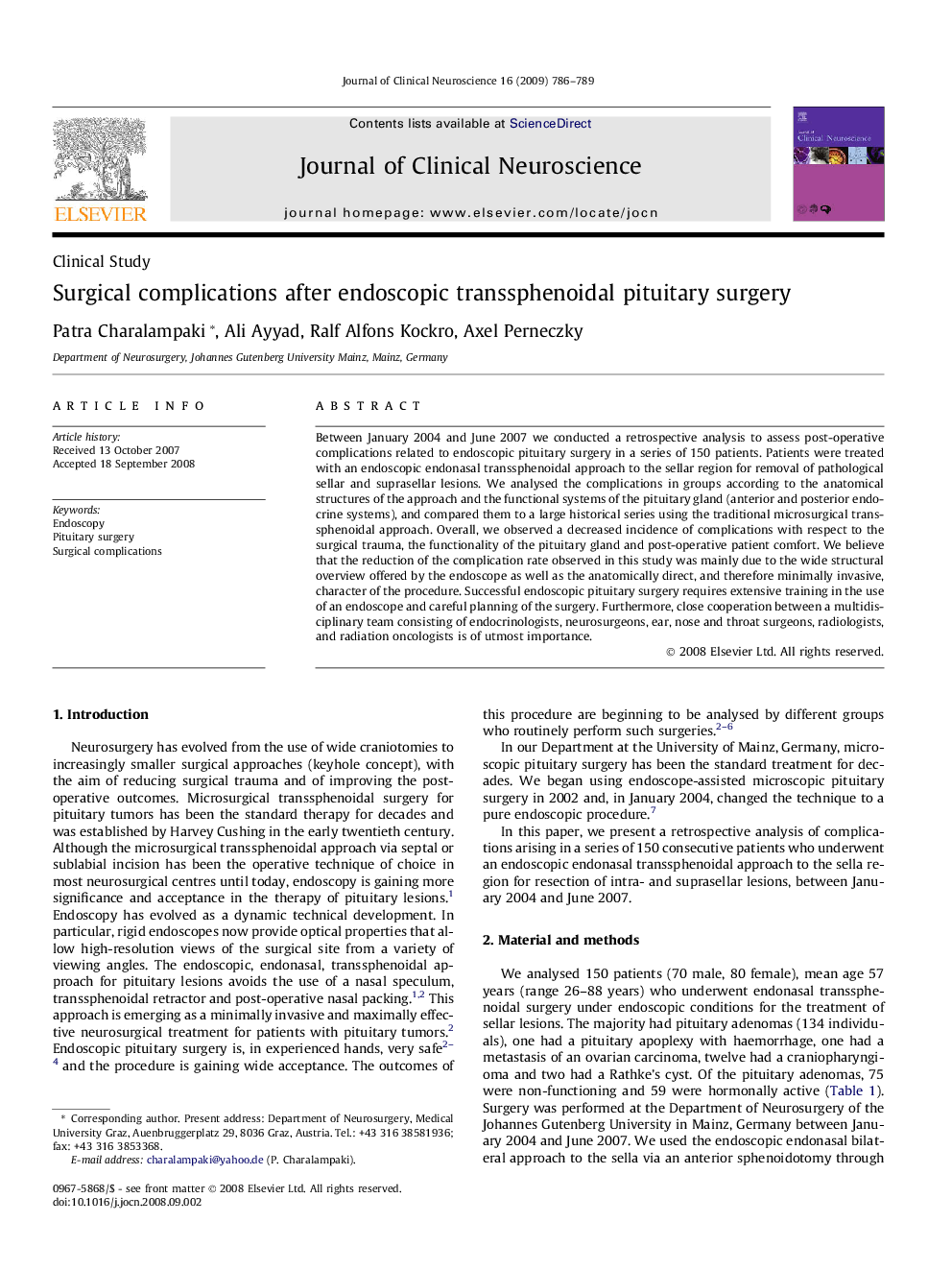| Article ID | Journal | Published Year | Pages | File Type |
|---|---|---|---|---|
| 3061838 | Journal of Clinical Neuroscience | 2009 | 4 Pages |
Between January 2004 and June 2007 we conducted a retrospective analysis to assess post-operative complications related to endoscopic pituitary surgery in a series of 150 patients. Patients were treated with an endoscopic endonasal transsphenoidal approach to the sellar region for removal of pathological sellar and suprasellar lesions. We analysed the complications in groups according to the anatomical structures of the approach and the functional systems of the pituitary gland (anterior and posterior endocrine systems), and compared them to a large historical series using the traditional microsurgical transsphenoidal approach. Overall, we observed a decreased incidence of complications with respect to the surgical trauma, the functionality of the pituitary gland and post-operative patient comfort. We believe that the reduction of the complication rate observed in this study was mainly due to the wide structural overview offered by the endoscope as well as the anatomically direct, and therefore minimally invasive, character of the procedure. Successful endoscopic pituitary surgery requires extensive training in the use of an endoscope and careful planning of the surgery. Furthermore, close cooperation between a multidisciplinary team consisting of endocrinologists, neurosurgeons, ear, nose and throat surgeons, radiologists, and radiation oncologists is of utmost importance.
